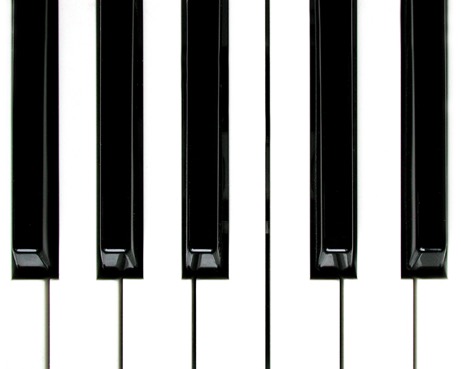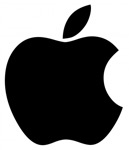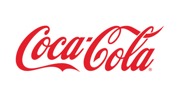

- © 2003 - 2025 Dynamix Productions, Inc. Contact Us 0



"Simplicity makes me happy."
Alicia Keys
Comedian Jim Gaffigan has a classic gut-busting routine about Hot Pockets. After expounding on the unsophistication of eating them, he envisions the meeting with the jingle writer:
Do love that jangle.
Do you think they worked hard on that song?
"What do you got so far, Bill?"
"Uh... uh... (sings) hot pocket?"
"Thats good, thats very good.
The jingle is almost as good as your "By Mennen"
Our daily life has us ingesting "jangles" and other ear worms that have become part of our subconscious. Maybe you've heard these simple sounds over and over again:
"Liberty, Liberty, Li-berty, Liberty"
"Nationwide is on your side"
"Double-A, TOOT-TOOT, M C O"
These sounds are almost as familiar as a logo like the Facebook F, the Micheline Tire man, or the Disney mouse ears. These are all trademarked logos and visual advertising devices. Sounds can also be trademarked as well. They don't necessarily need to be music, although most are to some degree. The U.S. Patent and Trademark Office calls these sound marks. As the patent office tells it, "A sound mark identifies and distinguishes a product or service through audio rather than visual means." The very first sound mark to be recognized is the three-note NBC chime (G-E-C), which started all the way back in 1927 during the earliest days of radio. NBC sent its affiliates a package with a three-note chime pad and a small mallet to use for time checks. In a clever bit of marketing, NBC even sold a chime for your home. "Call your family to dinner...signal your maid" one advertisement urges. Hmm, seems like that would have created a Pavlovian response every time Amos and Andy came on.
Sound marks aren't limited to music. Sounds that are organic, synthesized, and even speech can be a very effective tool to cement a brand's identity. Here's a pop quiz: What company or product do you think of when you hear:

Apple. The bitten apple logo is synonymous with a Mac (which was originally a Macintosh, hence a macintosh apple). Apple has also consistently stuck with a white background and simple font in packaging, manuals, web presence, and advertising. The Apple chime heard during a computer startup has more or less been present in its products for decades.

Coca-Cola. Their logo conjures up a classic taste (although they once infamously screwed with it - and their image - by temporarily changing its flavor), Santa Claus, and a bunch of young people on a hilltop holding hands and singing in perfect harmony. That 1971 television commercial is the most iconic ever and influenced a generation of Coke drinkers. Two commercially-released versions of "I'd Like to Teach the World to Sing (In Perfect Harmony)" charted at #5 and #7 on Billboard in the U.S., and #1 in several countries. Go ahead and hum it, you know you want to.

The Rolling Stones. Look at the logo and you instantly think of the bad boys of Rock n Roll. You can also picture Mick Jagger doing his chicken-wing strut and singing "Jumping Jack Flash" or "Brown Sugar."
The other thing I've seen successful companies do is embrace simplicity, as all of the above examples have done in their messaging. With sound identities, it's often a simple sequence of musical notes (Intel's chime) or a to-the-point phrase ("Cha-cha-cha-chia"). Although these brand idents are broad and all encompassing, a particular product can have it's own sound identity as well. One example is the kid whispering "Dogs love trucks" in Nissan's Frontier truck ads in the 1990s. It's simple on so many levels: we associate kids with dogs, and dogs with trucks; only three words; a whisper is a very minimal sound.
How can you create a sound signature to help your marketing? By following the rules of consistency and simplicity. To get there, first whittle down your logo, slogan, color scheme, fonts, and other visual identities to as simple and consistent of a message as possible. Every element should tie in together because you can use these as cues for your sound signature.
In my business, I've tied our logo, colors, and web site to the interior of the facility (take a tour of our studios here). For instance, our main color scheme across the board is neutral gray and black with splashes of blue and red accents. Our walls are gray, ceilings black, and the floor is either gray carpet or maple. When you walk in through our front door, you're immediately presented with bright red chairs. We use accents of red/orange to inspire creativity and inspiration. Our vocal booth has calming blue lights on the back wall (voice talent can be under incredible pressure), and the producer's desks have hanging red lamps for inspiration. I even keep an orange lava lamp on my desk for motivation. If my colors were sounds, together they would be simple and calming synthesized chords, a medium tempo light rhythm with a backbeat, and a reverberant sax or flugelhorn melody with a horn section giving occasional punches and stabs.
For me, seeing storyboards, brochures, and a color scheme helps to target music and style of narration to the audience the service is aimed at (I wouldn't use a Rolling Stones-like song for a hospital commercial, for instance). I'm also studying the intent and phrasing of the words. If we're going after heartstrings, then I would lean toward emotional sound elements. If we're showing that a product creates high productivity, then the soundscape might be more mechanical or precise.
I sometimes see jumbled or complex messaging going on in web marketing and broadcast advertising. Here are some loose rules to help you tailor a sound for your company:
Consistency. The music, scripting, narration, and other sound cues should remain consistent during an entire advertising or marketing campaign. Although jingles aren't as common anymore, always using the same custom or stock music builds brand awareness. The script construction and voice talent should remain uniform to achieve familiarity. The "rules" can be broken from time to time, but consistency is the key.
Stay on one topic at a time. You only have the listener/viewer for a brief amount of time (usually just seconds), so don't try to sell the whole shop in one go. Your aim is to get them to just step through the doorway. A plumbing service might want to focus on 24/7 response instead of all the services they do. Breaking up each thing you're trying to sell into separate campaigns or ads will create repetition of your brand.
Simplify the message. Use as few words as possible. Listeners will not remember details, only impressions. Try to connect those impressions to the product. A local coffee roaster might try to evoke the smell of freshly roasted and brewed coffee with people drinking coffee and having a good time. A few "Mmmms" and laughter could trigger personal memories of good times being had over coffee.
By planning an entire marketing campaign around these "sound" principles, hopefully your brand can achieve a sonic familiarity with customers. Keeping it simple, consistent, and on topic isn't easy – it's hard. But isn't your company worth it?
Here are some interesting links to our topic:
Sound mark examples at the U.S. Patent and Trademark Office:
https://www.uspto.gov/trademarks/soundmarks/trademark-sound-mark-examples
The NBC chimes story:
https://tralfaz.blogspot.com/2019/11/g-e-c-and-another-note.html
http://www.radioremembered.org/chimes.htm
https://99percentinvisible.org/episode/nbc-chimes-behind-scenes-first-trademarked-sound/